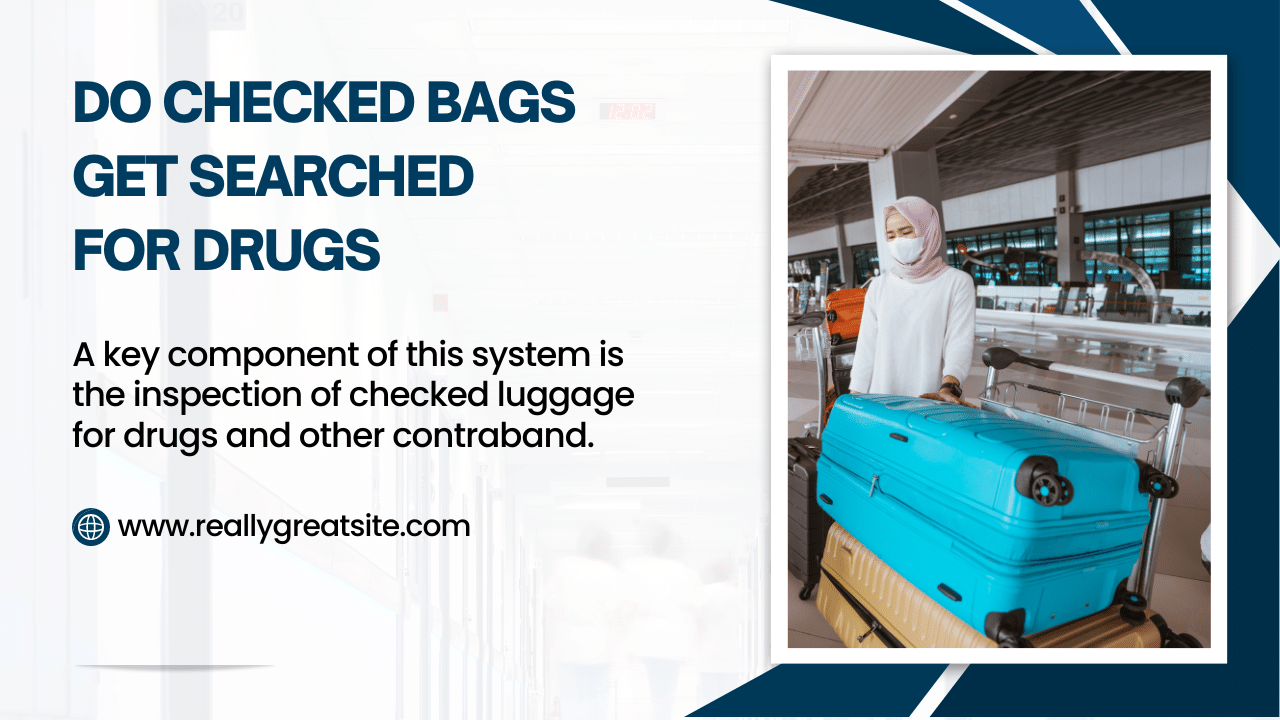We live in an interconnected world, where air travel is integral to our lives, whether for business, pleasure, or necessity. But just as crucial as air travel is, so is the system of checks and balances in place to ensure safety, legality, and order. A key component of this system is the inspection of checked luggage for drugs and other contraband. But what exactly happens in the journey your bag takes from the check-in counter to the plane’s cargo hold? Read on to uncover the intriguing world of “do checked bags get searched for drugs”, with expert insights from Dana Bledsoe, a renowned security professional with an extensive background in airport security and narcotics detection.
Who is Dana Bledsoe?

Dana Bledsoe is a respected figure in airport security and drug enforcement. With a career spanning more than two decades, she has held several key positions, including roles in the Transportation Security Administration (TSA) and international anti-drug agencies. Her knowledge and expertise provide a unique perspective into the intriguing dynamics of narcotics inspections of checked bags.
The Screening of Checked Baggage for Narcotics

Drug enforcement at airports is a paramount concern for authorities worldwide. Every checked bag, without exception, goes through rigorous screening processes. These procedures involve state-of-the-art technology designed to identify threats, including illegal substances.
The primary tool for detecting drugs in checked baggage is advanced X-ray scanners. These high-tech machines produce detailed images of the bag’s contents, allowing security officers to discern items based on their shapes and densities. Unusual or suspicious content triggers a manual search where officers open the bag and inspect its contents directly.
The Science Behind Drug Detection

Technology advancements have led to the integration of chemical detection systems with X-ray scanners, adding an extra layer of precision to the process. The system can detect minute traces of narcotics and other controlled substances, flagging bags for further inspection.
This process is accurate and efficient, often leading to successful interceptions of drug smuggling attempts. This precision can be attributed to constant updates in the database of these detection systems, keeping up with new synthetic drugs entering the illegal market.
Drug Smuggling and Checked Luggage
Drug traffickers employ sophisticated methods to evade detection. However, the continuous improvement in technology and the skill set of security personnel make it increasingly difficult to transport illegal substances through checked luggage. Drug interdiction at airports plays a significant role in combating the global narcotics trade.
Enhanced Technologies for Drug Detection in Checked Bags
The fight against drug trafficking is an ever-evolving landscape. As traffickers adopt new methods and substances, security agencies respond by implementing innovative technologies and strategies. The use of artificial intelligence and machine learning has been transformative in this arena, offering unprecedented accuracy and efficiency in detecting illicit substances.
Artificial Intelligence (AI) and machine learning algorithms can analyze the x-ray images of checked bags, recognizing patterns and identifying suspicious items with exceptional precision. Their ability to ‘learn’ means these systems continuously improve their detection capabilities, adjusting to new smuggling techniques and substances.
Advanced Training of Security Personnel
Alongside technology, the role of human expertise remains vital. Training programs for airport security personnel have evolved significantly, equipping staff with the knowledge and skills to detect and respond to attempts at drug smuggling effectively.
These programs emphasize understanding the variety of smuggling methods, recognizing the visual cues of different narcotics in x-ray images, and staying abreast of emerging trends in the drug trade. Continuous training ensures personnel can operate the advanced technologies effectively and make informed decisions when potential narcotics are detected.
Cooperation and Intelligence Sharing
Another crucial aspect of drug detection is the collaboration between different entities involved in aviation security. Airport authorities, airline operators, law enforcement agencies, and intelligence services all play a part in this comprehensive network. By sharing information and resources, these organizations can maximize their collective efforts to intercept drug smuggling attempts.
Intelligence sharing extends across international borders, with global initiatives such as the World Customs Organization’s (WCO) Container Control Programme (CCP) playing a significant role. These cooperative efforts enable the detection of smuggling routes and trends, aiding in the interception of drug shipments and the apprehension of traffickers.
What is the Background of Dana Bledsoe?
In addition to her work in airport security, Dana Bledsoe has also contributed significantly to these international collaborations. With experience working in different countries and roles, she brings a unique perspective to narcotics detection, advocating for continuous improvement and cooperation in this critical field.
The Future of Drug Interdiction at Airports
Looking to the future, the focus remains on advancing technology and expertise to stay ahead of traffickers. Emerging technologies, like 3D imaging and biometric identification, hold promise for further enhancing airport security. Additionally, improving the coordination between different organizations and countries will continue to be a priority.
Frequently Asked Questions About Do Checked Bags Get Searched for Drugs
Here are some common questions on the topic:
How often are bags physically checked after going through the scanner?
Bledsoe explains that the physical inspection of checked bags is a relatively rare occurrence. If a bag raises suspicion in the scanning process, it may be flagged for further inspection, which could involve a manual search.
How effective are drug enforcement measures for checked bags?
Statistically, the enforcement measures in place are remarkably effective. With continuous advancements in technology and training, the rate of successful drug interception continues to rise.
What happens if drugs are found in a checked bag?
The discovery of illegal substances in a checked bag triggers a legal process. Local law enforcement and potentially federal agencies become involved, depending on the type and amount of drug found.
Dana Bledsoe’s career in security and drug enforcement underlines the importance of expertise and dedication in maintaining our safety during air travel. The comprehensive procedures and advanced technologies used to screen our checked luggage for illegal substances serve as a testament to the unwavering commitment of security personnel across the globe.
Every time we pack our bags for a journey, let’s remember the invisible network of professionals working tirelessly to ensure our journey is safe, secure, and drug-free.
Also Read: MSCHF Big Red Boots Website (All You Need to Know)
Conclusion
In conclusion, the screening of checked bags for drugs is a complex process involving sophisticated technology, highly trained personnel, and extensive cooperation between different entities. These measures not only deter drug trafficking but also ensure the safety and security of all air travelers. We hope our guide about “Do Checked Bags Get Searched for Drugs” will prove much beneficial for all our readers.
As Bledsoe succinctly puts it, “Our aim is not just to catch those doing wrong, but to protect those doing right. Every successful interception of drugs is a victory not just for us as professionals, but for society as a whole.”
The next time you’re at an airport, whether checking in your bag or waiting at the carousel, take a moment to appreciate the extensive measures in place to ensure your safety and the immense efforts made to deter and detect drug trafficking.

